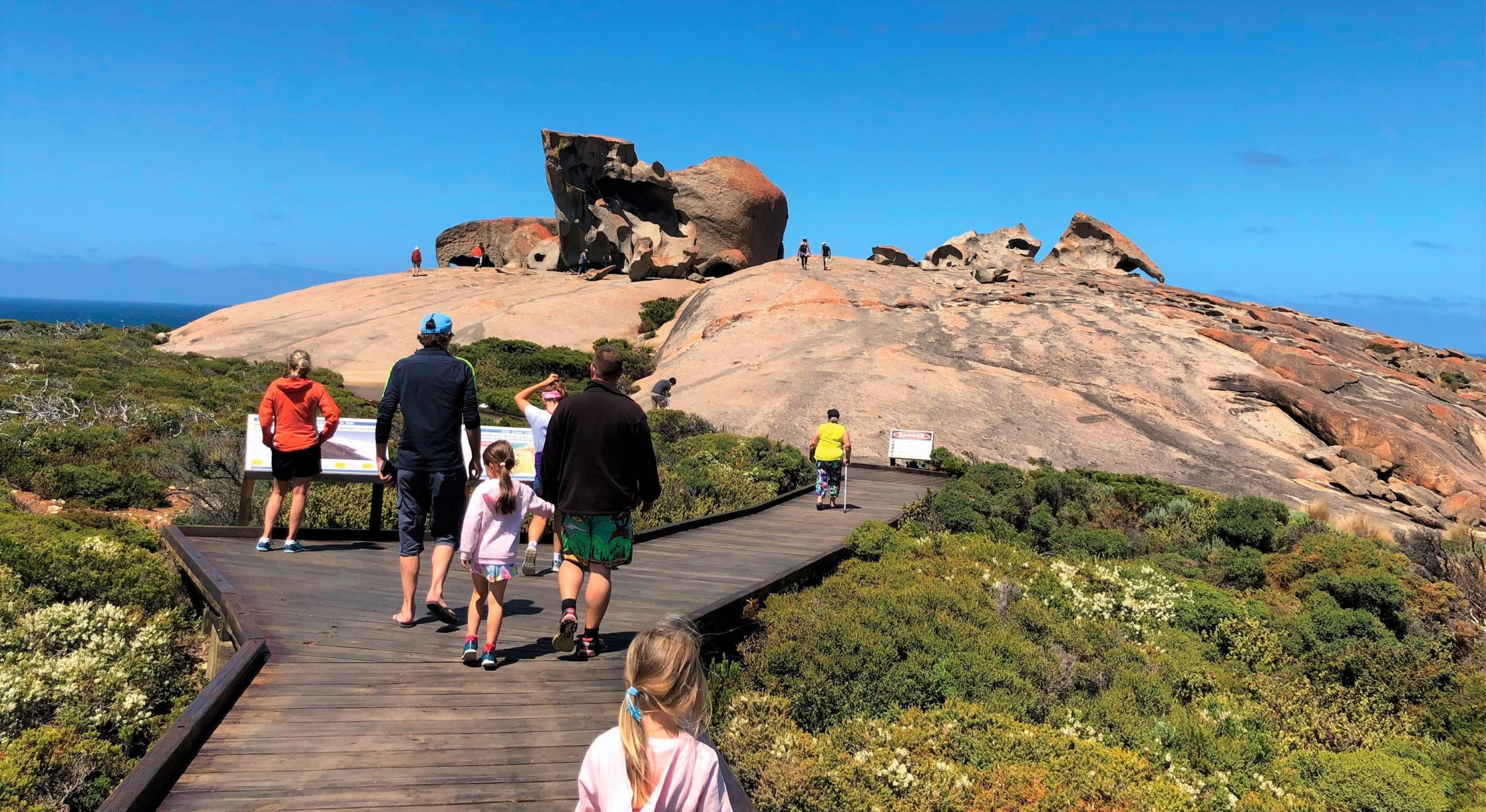7 South Australian natural wonders

Australia is blessed with natural wonders like Uluru, the Great Barrier Reef, the Daintree Forest and Hugh Jackman. When it comes to our own state, there’s no shortage of impressive scenic features. Here are just a few to add to your next travel itinerary.
Naracoorte Caves, Limestone Coast
Spend enough time as the world’s most isolated continent and you’re bound to end up with a few unique animals on board. For more than 500,000 years, the Naracoorte Caves have been trapping all sorts of creatures, including now-extinct species of megafauna, like the marsupial lion and chunky-jawed sthenurine kangaroo.
The vast collection of fossils discovered in the cave system has earned the site a UNESCO World Heritage listing. Visitors can learn more on a tour of the Victoria Fossil Cave – ground zero for fossil finds in the area. While in the cave, you’ll also see plenty of stalactites, stalagmites and other decorative features.
The Bat Tour starts at the Bat Observation Centre, where there’s a viewing via infra-red camera of the critically endangered bent-wing species. Then it’s off to Blanche Cave, a wintertime hangout for hibernating bats. Turn up on a summer evening to see bats heading out for a night-time insect feast.
Visitors up for a bit of a thrill can have a go at adventure caving in some of the system’s more challenging caverns.
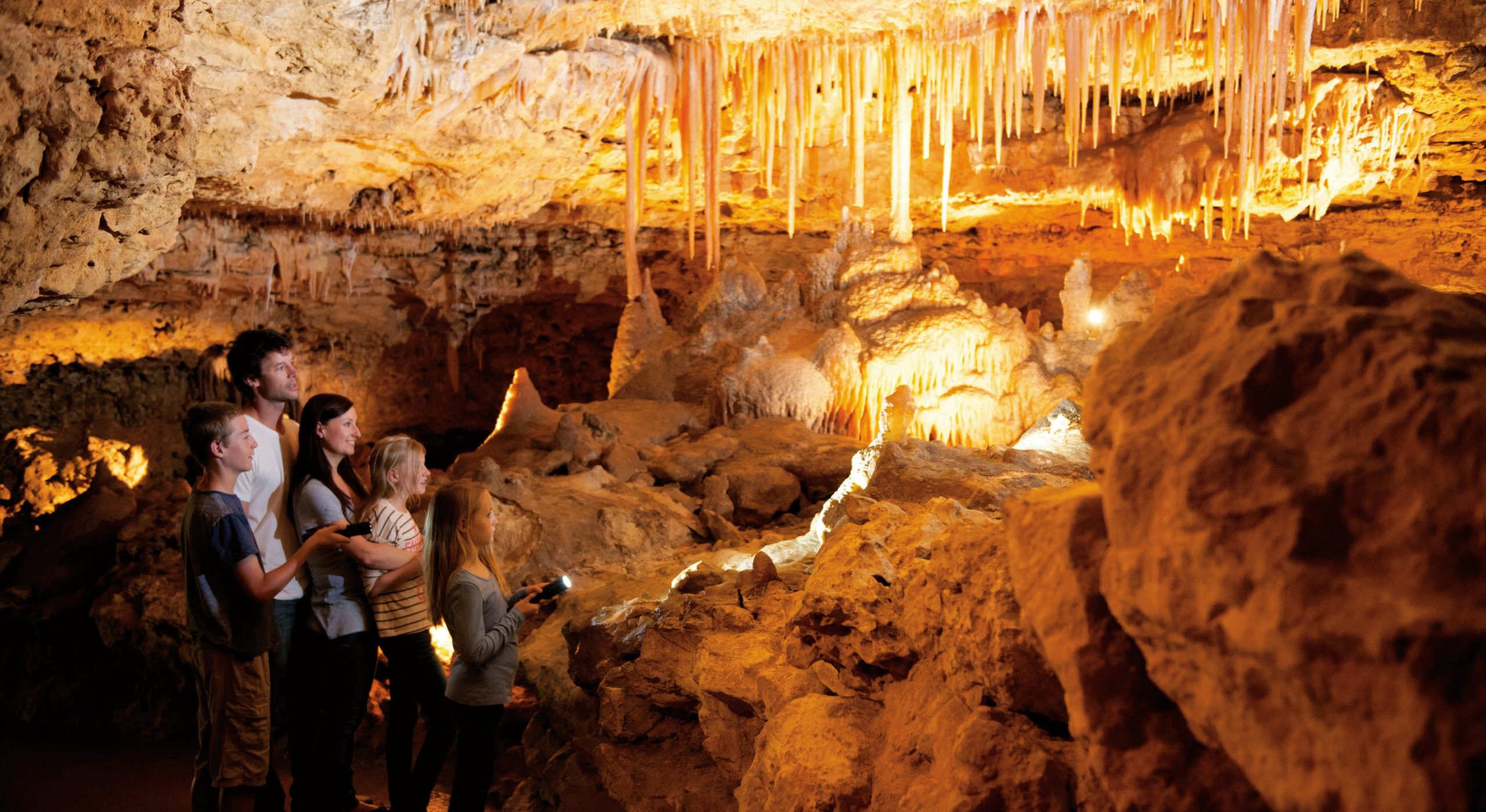
Sugarloaf, Hallett Cove
For most of us, Hallett Cove is the modern southern suburb we pass en route to the beaches at Port Noarlunga and the mid-south coast. Yet a mere 280 million years ago the whole area was buried under thick glacial ice.
When the ice melted it formed a lake, which has since disappeared. Subsequent erosion has broken open the landscape and revealed some fascinating features.
The best known of these is the Sugarloaf, a gelato coloured lump of sand and clay that shows the various layers of sediment that were deposited in the lake over thousands of years.
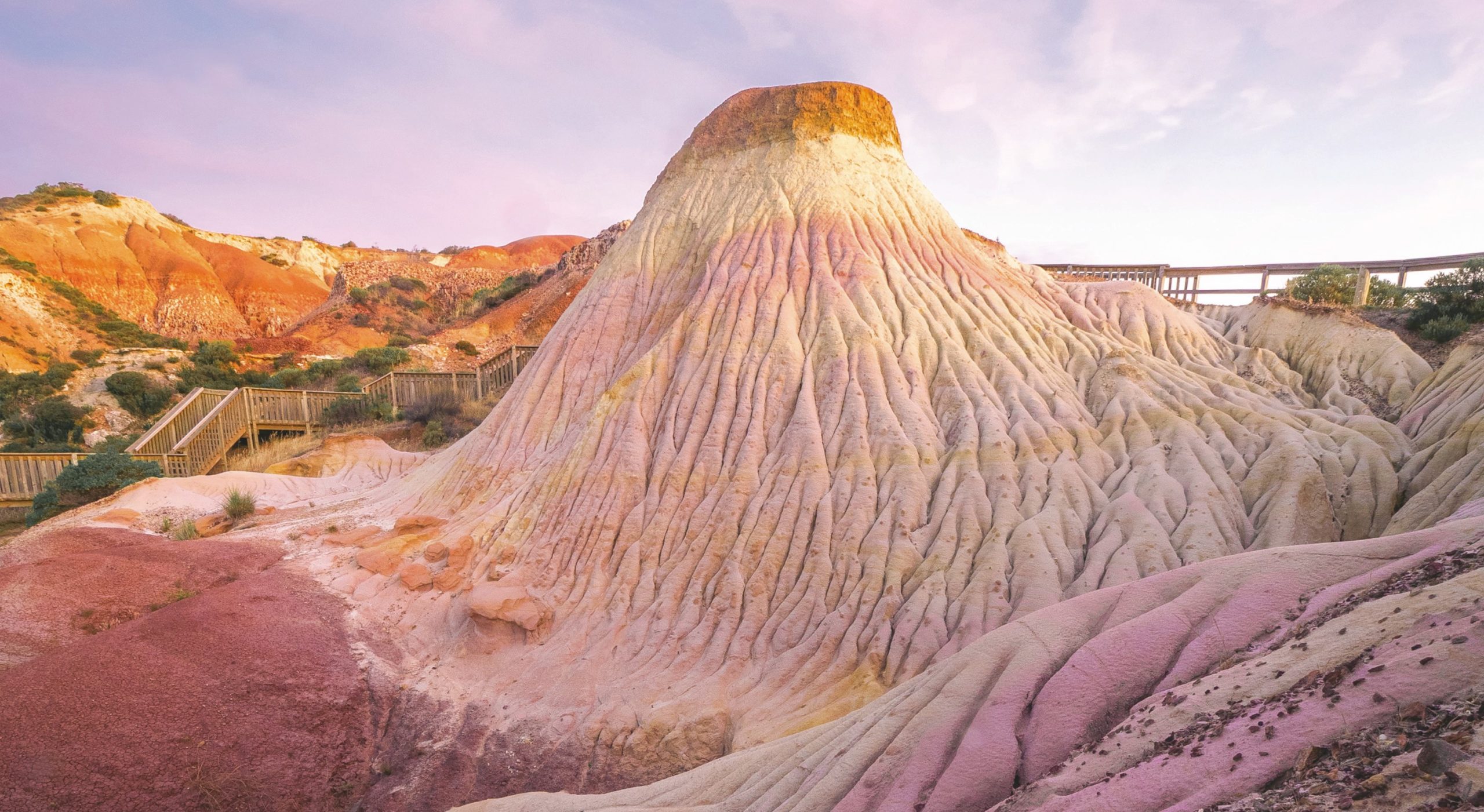
Wilpena Pound, Flinders Ranges
One of South Australia’s most iconic landmarks, Wilpena Pound is a massive natural amphitheatre encircled by towering quartzite bluffs. Geologists say its origin dates back about 800 million years when the region was covered by an ancient sea.
Marine deposits formed sedimentary layers that were later compressed, folded and uplifted to form mountains much higher than the present-day ranges. Subsequent erosion has torn the landscape apart, leaving behind the scenic wreckage we see today.
There’s a range of walks of various lengths and difficulty levels in and around the pound, including a section of the Heysen Trail. For the full impact of Wilpena Pound’s breathtaking splendour, take to the skies on a scenic flight.
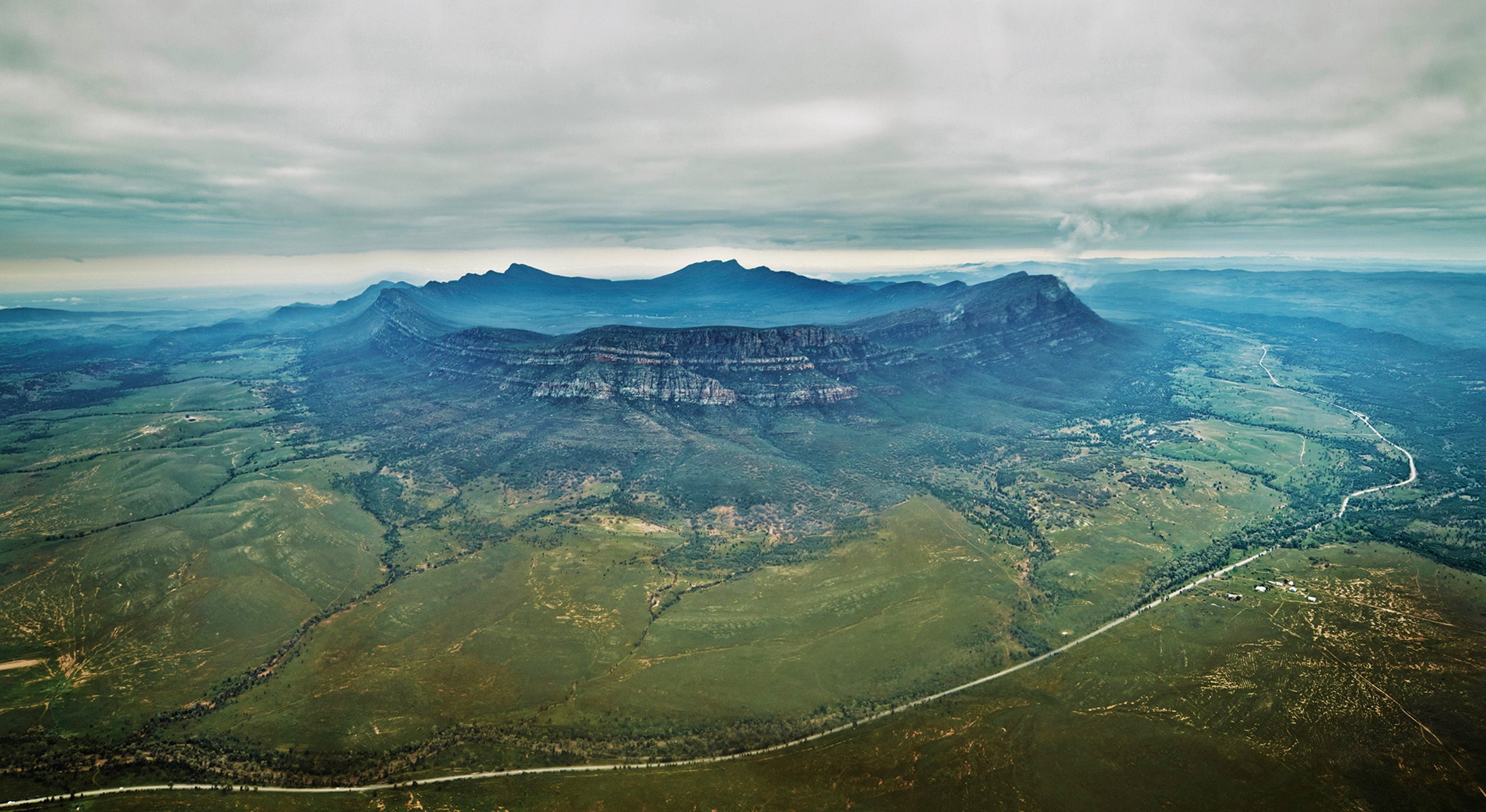
Organ Pipes, Gawler Ranges
Proclaimed in 2002, the Gawler Ranges National Park covers a whopping 166,000 hectares. It’s a place of ancient, weathered hills, colourful springtime blooms and prolific wildlife.
But the stars of the show are the volcanic rhyolite outcrops that date back 1500 million years. Fissures formed in the rock as the oozing lava cooled, and subsequent erosion has created a landscape of rocky columns that seem almost too symmetrical to have occurred naturally.
You’ll find them throughout the ranges, with the cluster at Policeman’s Point located closest to the Old Paney Scenic Route (the main east-west road through the park).
Travellers in 4WDs can reach the larger outcrops at Yandinga Falls and the appropriately named Organ Pipes (both off Yardea Rd), and at Kolay Mirica Falls, in the remote northern section of the park.
Secluded bush camping areas make for a great outback experience that’s not too far from civilisation.
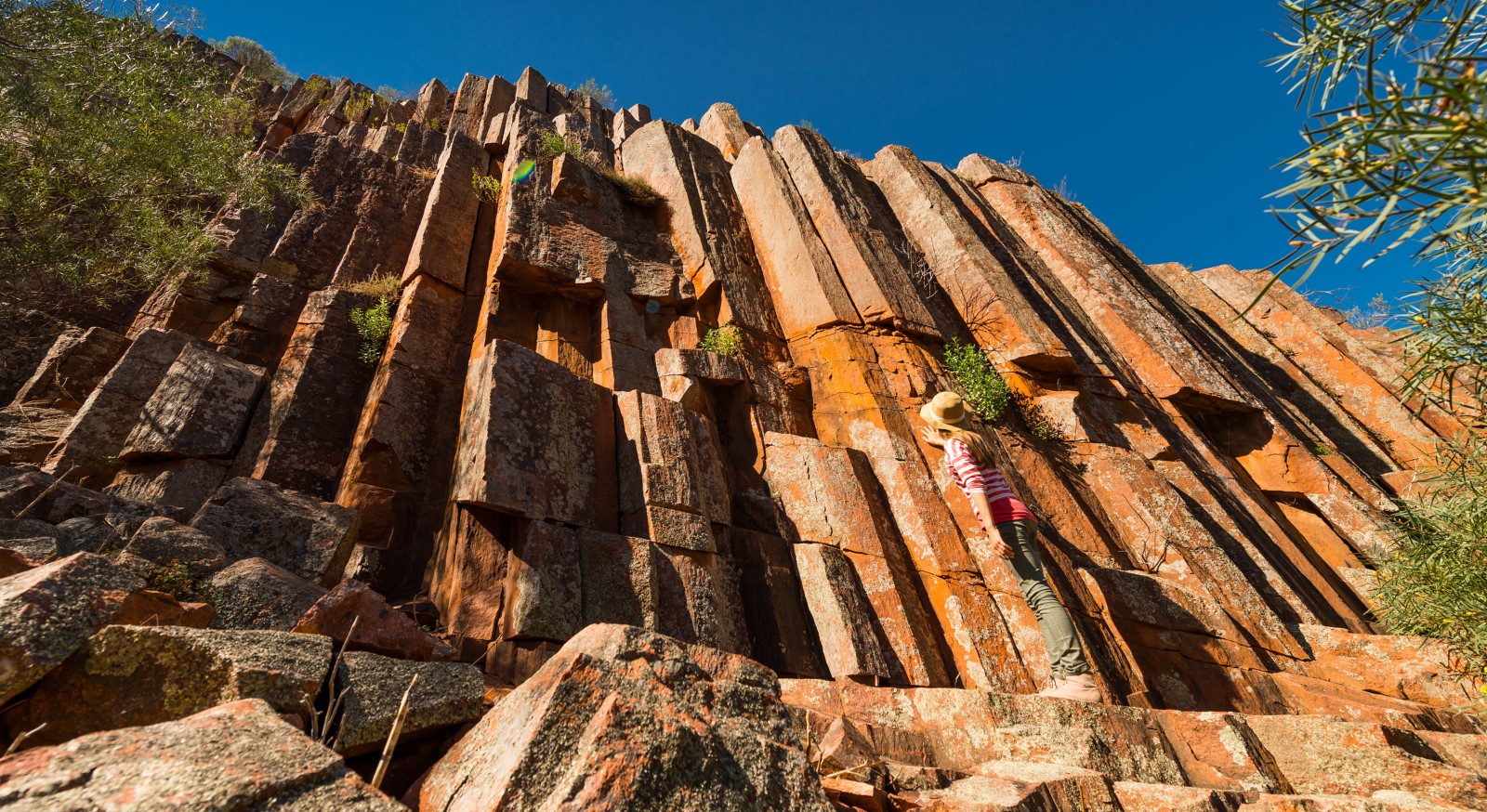
Blue Lake, Mount Gambier
Pragmatically named, the Blue Lake fills the crater of one of Australia’s most recently active volcanoes. Though, given the last eruption was about 5000 years ago, there’s no need to postpone your trip.
For most of the year, the lake’s water is an unremarkable grey colour, but every summer it turns a vivid blue.
The cause of this colour change is still unclear. It may have something to do with the warming of the surface layers of water and its effect on the annual calcium precipitation cycle, and several other science-y things.
The lake is fed by an underground aquifer, which was blasted apart by the volcano. Most of the water continues to pass through the crater on its millennia-long subterranean journey to the coast.
There’s a 3.6km walk around the crater rim and tours are available down to the lake surface.
Note: Due to COVID-19 restrictions, check tours are available before visiting the Blue Lake.
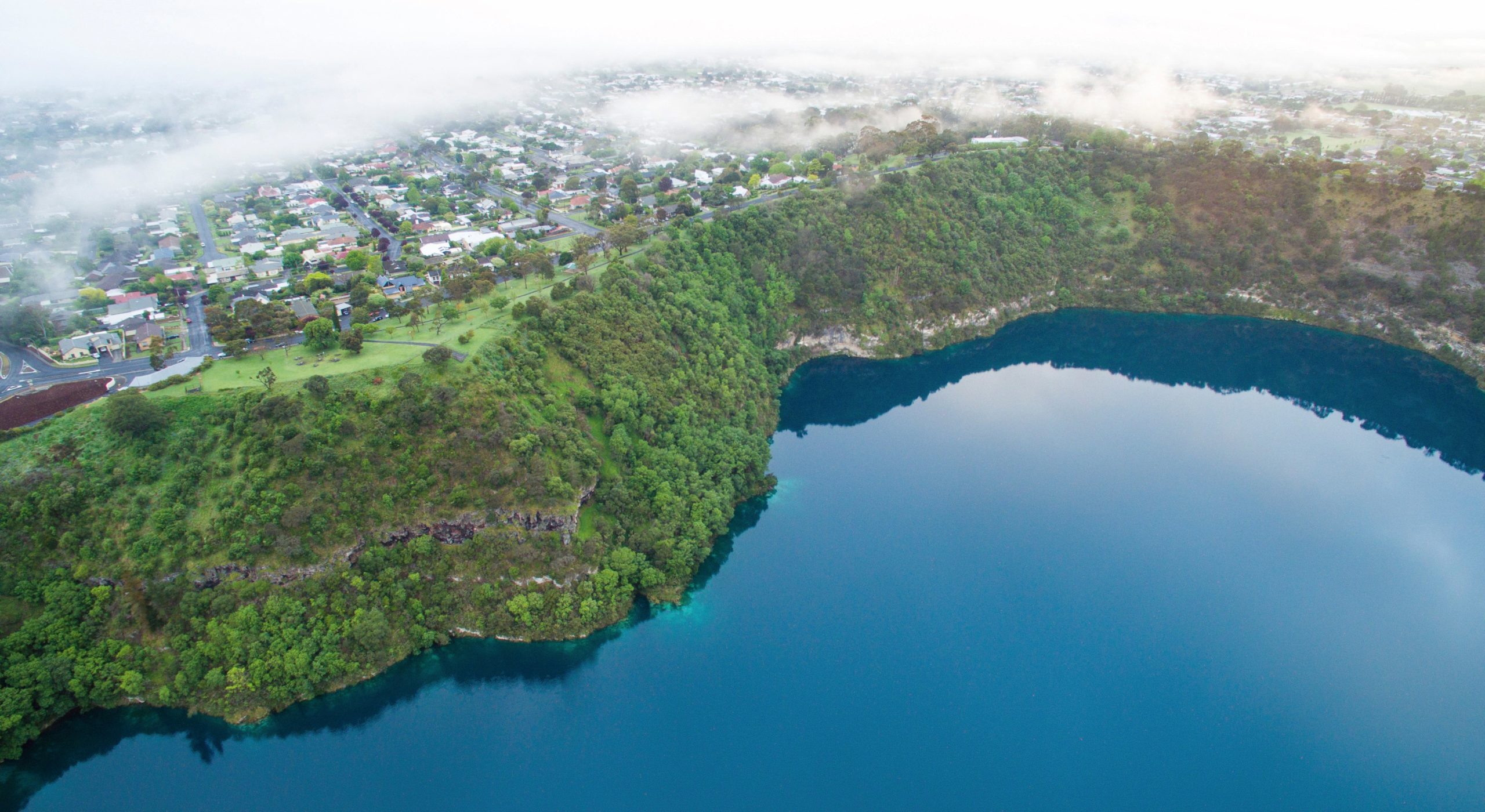
Pildappa Rock, Eyre Peninsula
Long before sheep, the land surface of the upper Eyre Peninsula was much higher, and beneath it lay great slabs of granite. Over time, erosion has exposed several resilient outcrops.
Poking up from farmlands north of Minnipa, Pildappa Rock is often compared to Western Australia’s famous Wave Rock. The wave shape of its lofty north and south flanks were formed by the erosive power of moisture when most of the rock was still underground. Lichen growths have created artistic flourishes worthy of an exhibition.
Atop Pildappa there are rock holes known as gnammas, which were once a valuable source of semi-permanent rainwater in an arid environment. It’s a relatively easy climb to the top, where there’s an unhindered view through to the Gawler Ranges.
For day-trippers and picnickers, there are toilets, shelters and gas barbecues.
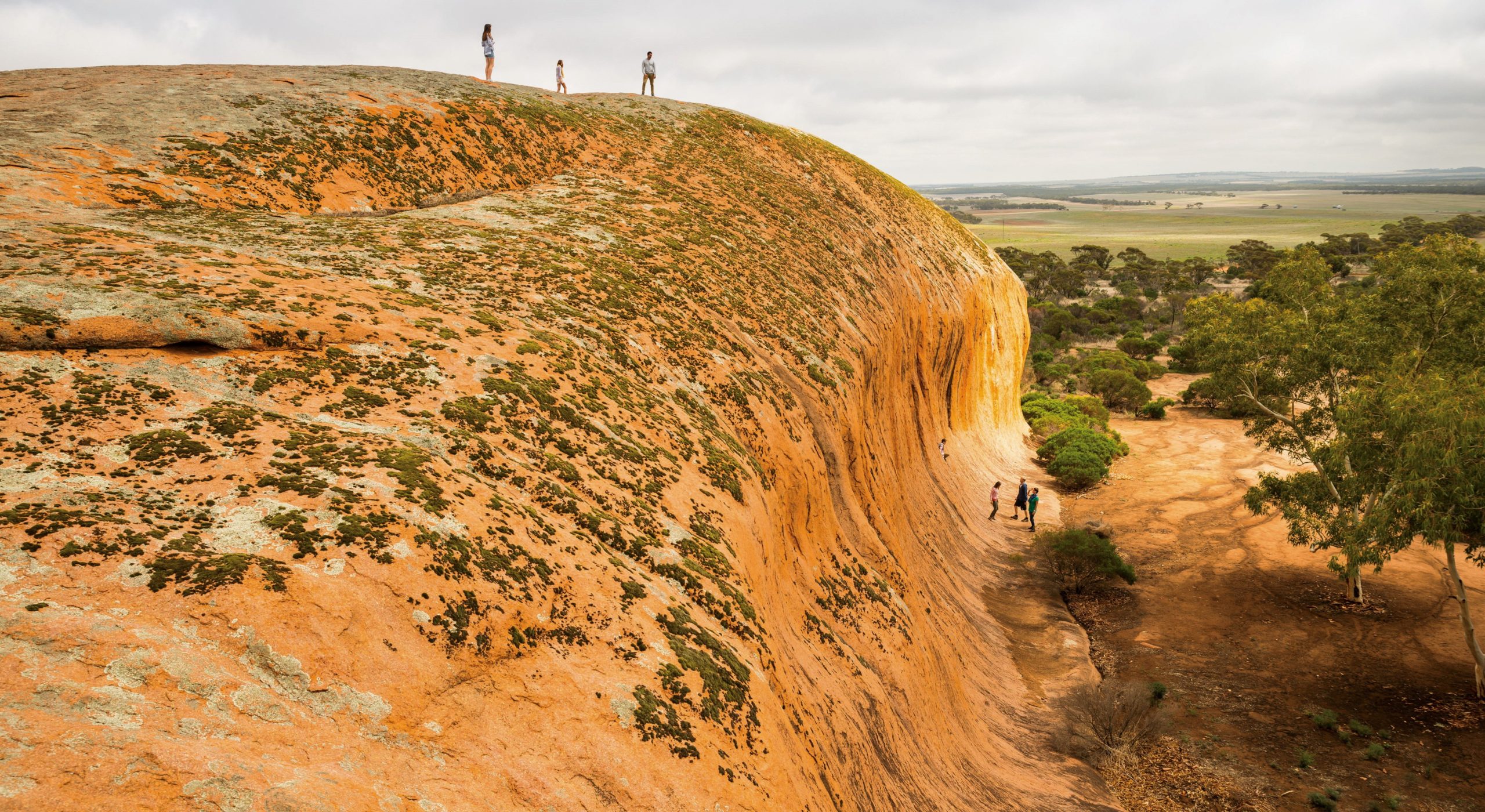
Remarkable Rocks, Kangaroo Island
The name says it all. Spectacularly perched high above the Southern Ocean, the scattered boulders of Remarkable Rocks have been sculpted into wild shapes by the incessant forces of wind, rain and sea spray.
With their weirdly melted appearance and splashes of orange lichen, they wouldn’t look out of place at a Salvador Dali art installation.
The rocks are located in the Flinders Chase National Park, which is recovering from the 2019-20 bushfires. The park’s main attractions are open and the National Parks and Wildlife Service is welcoming visitors.
